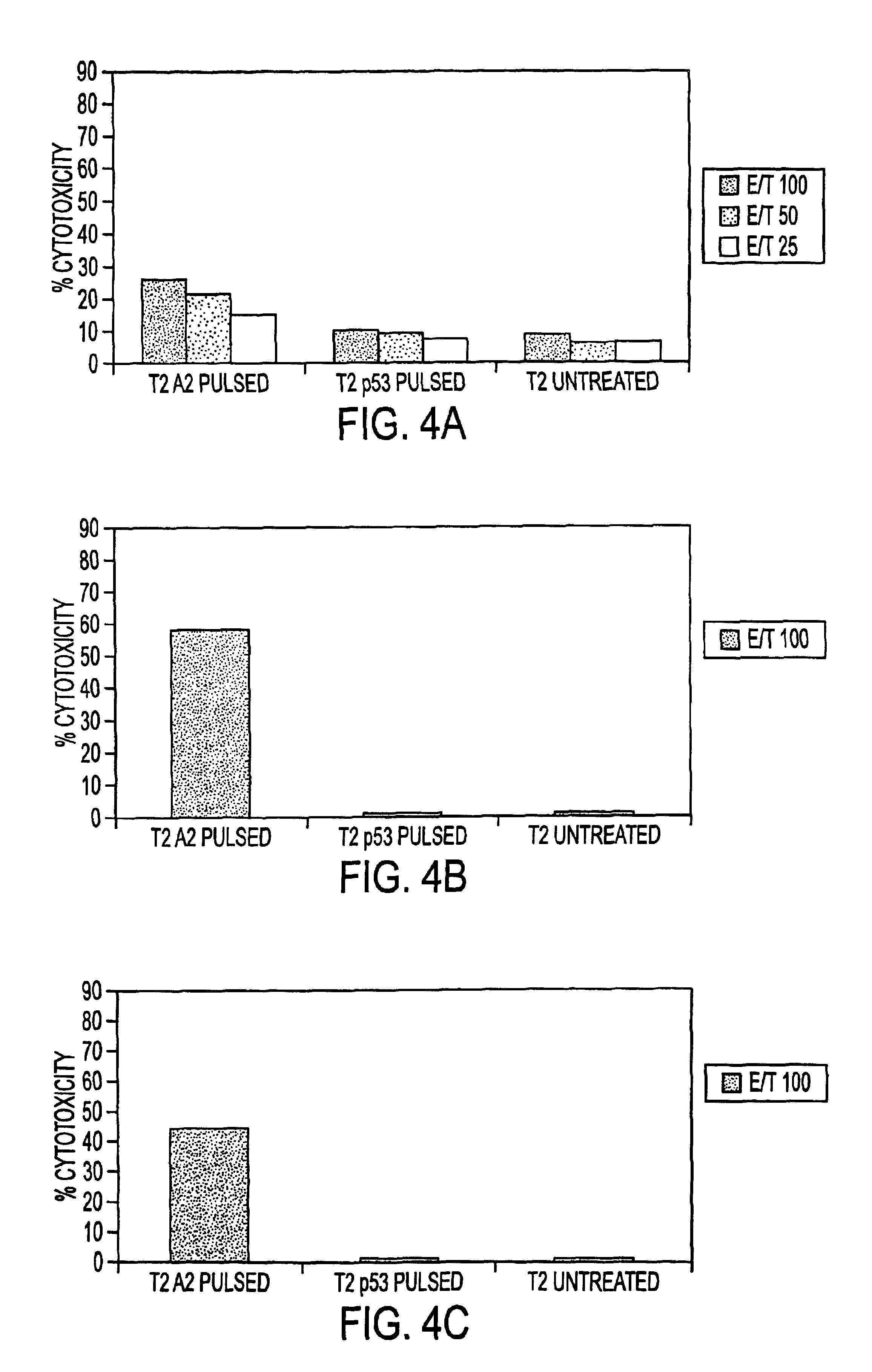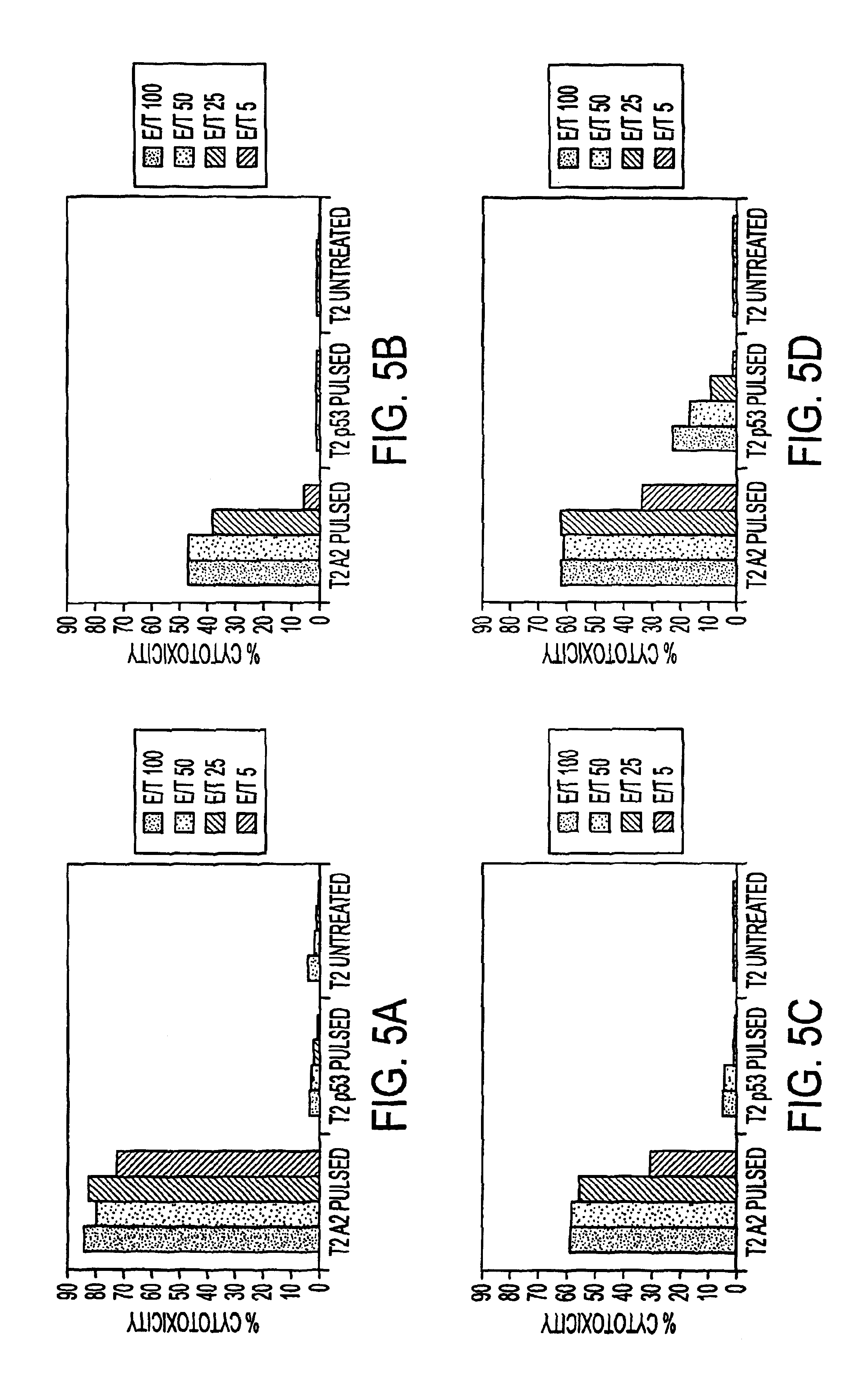Immuno-reactive peptide CTL epitopes of human cytomegalovirus
a technology of immunoreactive peptides and cytomegalovirus, which is applied in the field of immunoreactive peptide ctl epitopes of human cytomegalovirus, can solve the problems of severe congenital disease in the fetus or infant, hcmv is a common cause of mental retardation in children, and hcmv is associated with morbidity and mortality in immunocompromised patients
- Summary
- Abstract
- Description
- Claims
- Application Information
AI Technical Summary
Benefits of technology
Problems solved by technology
Method used
Image
Examples
example 2
Derivation of LCL Antigen-Presenting Cells
Simultaneously, an autologous antigen presenting cell line was prepared by Epstein Barr virus immortalization of PBL (see Current Protocols in Immunology, Unit 7.22, Wiley-Liss Press (1993)). Deriving the CTLs and antigen presenting cells from the same individual ensured HLA matching between the cell lines.
example 3
In vitro Stimulation by HCMV
To initiate the in vitro stimulation of the WBC, a monolayer of autologous dermal fibroblasts obtained from the same volunteers as the WBC was established by plating the cells in 12-well plates at 10.sup.5 cells / ml / well in DMEM-10% HAB for 24 hours. After 24 hours in culture the fibroblasts were infected with CMV virions (AD169 or Towne strain) for 2 hours at a multiplicity of infection of between 1 and 5. The medium and virus were aspirated from the monolayer, and 1 ml of fresh DMEM-HAB was added. The monolayer was incubated in the medium for an additional 4 hours, following which time, the medium was aspirated. Two milliliters of medium containing 8-10 million WBC were added per well containing CMV infected fibroblasts. The WBC and fibroblasts were cultured in RPMI-1640 (Irvine Scientific) containing 50 U / ml penicillin, 50 .mu.g / ml streptomycin, 4 mM L-glutamine, 25 .mu.M 2-mercaptoethanol, 10 mM HEPES and 10% HAB (TCM-HAB). This was termed the first st...
example 4
Procedure for Identification of the CTL Epitope
WBC stimulated two times by HCMV on dermal fibroblasts were cloned by limiting dilution in 96 well U-bottom plates as follows. After two HCMV stimulations, the WBC were depleted of CD4.sup.+ T cells by negative selection using incubation with paramagnetic beads conjugated to anti-CD4 antibodies. The resulting population was generally between 90-95% CD8.sup.+, a reliable T cell subset marker, and generally 99% CD3.sup.+, a marker for most peripheral blood T cells as assayed by either flow cytometry or fluorescence microscopy. This final population was plated at a concentration between 0.3-3 cells per well in a final volume of 150 .mu.l. Each well also contained .gamma.-irradiated 1.0-3.0.times.10.sup.5 allogeneic peripheral blood mononuclear cells (PBMC) in TCM-HAB supplemented with 50-100 IU / ml recombinant IL-2 (Chiron-Cetus) and 0.5 .mu.g / ml PHA (Murex).
After 3 days of culture, the PHA was diluted 2-fold by exchanging 75 .mu.l with fre...
PUM
| Property | Measurement | Unit |
|---|---|---|
| time | aaaaa | aaaaa |
| volume | aaaaa | aaaaa |
| time | aaaaa | aaaaa |
Abstract
Description
Claims
Application Information
 Login to View More
Login to View More - R&D
- Intellectual Property
- Life Sciences
- Materials
- Tech Scout
- Unparalleled Data Quality
- Higher Quality Content
- 60% Fewer Hallucinations
Browse by: Latest US Patents, China's latest patents, Technical Efficacy Thesaurus, Application Domain, Technology Topic, Popular Technical Reports.
© 2025 PatSnap. All rights reserved.Legal|Privacy policy|Modern Slavery Act Transparency Statement|Sitemap|About US| Contact US: help@patsnap.com



